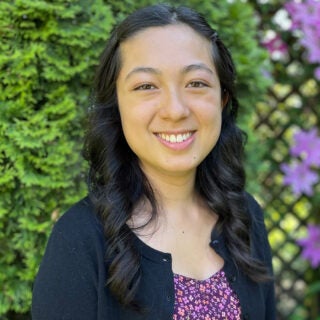
Doctor Who’s alien anatomy explained by USC Dornsife alumna
Amelia Marvit has taken her passion for biology and Doctor Who, the long-running science fiction TV series, to new heights with a featured article in Scientific American.

Marvit, who recently graduated with a bachelor’s degree in human biology from the USC Dornsife College of Letters, Arts and Sciences, delves into the fascinating world of Time Lord physiology, focusing on their unique, dual-heart cardiovascular system.
Time Lords, such as the central character of the TV show, are an advanced alien species with the ability to travel through time and space, regenerate their bodies, and live for centuries.
Combining her scientific knowledge with creative speculation, Marvit explains how the Doctor’s two hearts might function and evolve. She draws parallels with real-world biology, including cephalopod (think “octopus”) cardiovascular systems and human heart conditions, to create a plausible scientific framework for the fictional alien anatomy.
Scientific American spotted an early version of the article after Marvit received a student recognition award from Phi Kappa Phi, USC’s oldest interdisciplinary honor society, for writing it.
“Combining her love of science fiction with a deep knowledge of hard science — exemplifying the cross-disciplinary thinking at the heart of the Dornsife experience — Amelia shows us how imagination will always be the lifeblood of scientific hypothesis,” said Emily Hodgson Anderson, college dean of undergraduate education. “She follows the grand tradition of natural philosophers, at a time when intellectual disciplines didn’t exist, who could dream their way into discovery.”